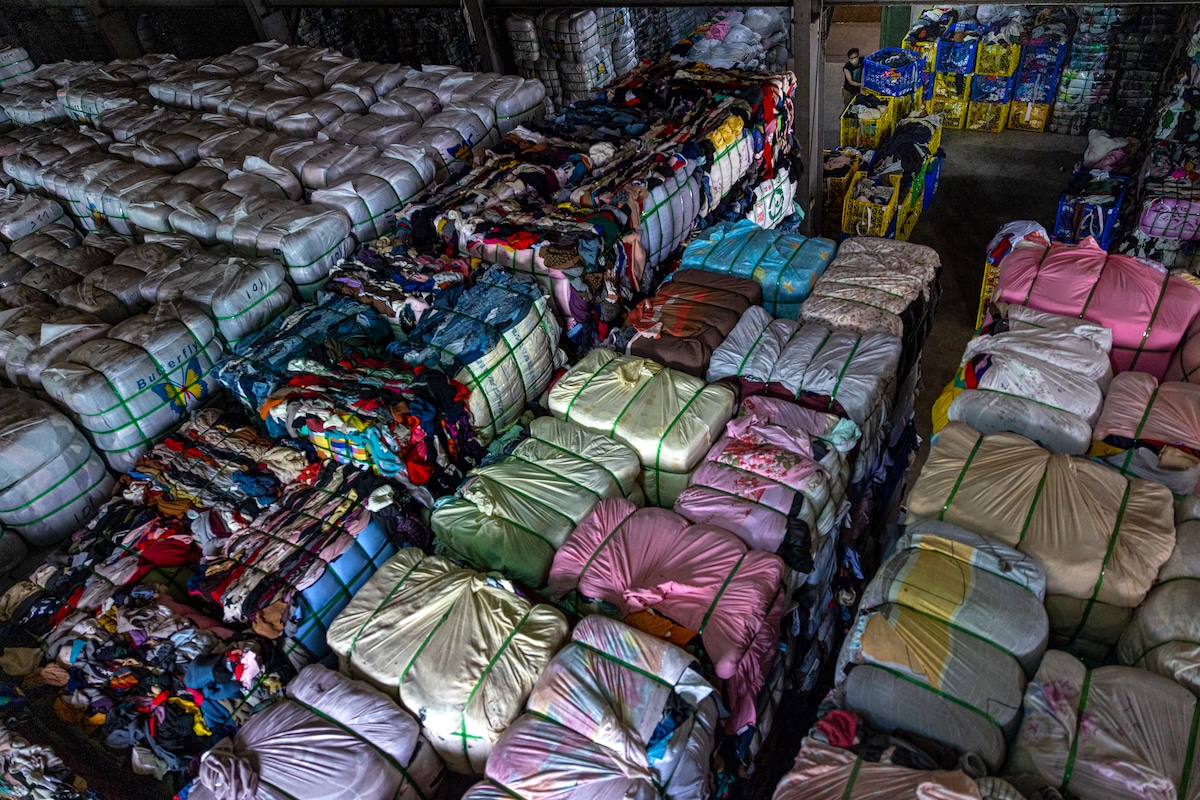Researchers Develop Method to Make Mixed-Fiber Clothing Recycling Easier

 Why you can trust us
Why you can trust us
Founded in 2005 as an Ohio-based environmental newspaper, EcoWatch is a digital platform dedicated to publishing quality, science-based content on environmental issues, causes, and solutions.
Researchers from Aarhus University in Denmark have created a new technology that may help boost garment recycling rates.
The technology can help remove the material elastane from nylon, a common fabric blend for clothing like leggings and other activewear, shapewear and swimwear. But elastane in particular can be difficult to separate out from other fabric materials.
The researchers published their findings in the journal Green Chemistry.
“The many links in the elastane chain are bound together by a small molecule called a diamine. By heating the clothes to 225 degrees Celsius and adding a specific alcohol, we have found a method to break down the bonds in elastane. When this happens, the chains fall apart and the materials separate,” explained Steffan Kvist Kristensen, an assistant processor at the Interdisciplinary Nanoscience Center at Aarhus University.
The process takes a little over four hours, according to Kristensen. So far, the research team has tested the method on up to two pairs of nylon stockings at a time, and they are still working to find ways to separate elastane from other materials, like cotton.
“We’re not quite there yet with cotton, because some of the cotton fibres are broken down in the process,” Kristensen said in a press release. “But we believe that, with some minor adjustments, we can solve this problem.”
Today, there are many challenges with clothing recycling, and only about 1% of old clothing textiles are recycled into new clothing items, according to the Ellen MacArthur Foundation. The numbers are slightly higher in Denmark, with 6% of garments being recycled, but still far lower than recycling rates for other materials, including plastic packaging, in the country.
Old garments may be recycled with the content tags removed or faded, making it more difficult to determine what fiber or fibers from which each item is made. Further, fiber blends in a piece of clothing are hard to separate out for proper recycling, The Sustainable Fashion Forum reported.
Increasing innovations in recycling, such as the method developed by researchers from Aarhus University, may make textile recycling easier and more common in the future. This will be important for reducing fashion waste and, ultimately, the industry’s emissions.
The fashion industry is the second-highest polluting industry on Earth, after oil and gas, according to a 2022 study. As reported by UN Climate Change, the fashion industry is responsible for about 10% of all greenhouse gas emissions globally, which will have to change to limit global warming to 1.5 degrees Celsius above pre-industrial levels as outlined in the Paris Agreement.
The authors of the study noted that they’ve only tested the mixed-fiber recycling method at a small-scale and will need to work with facilities outside of Denmark that have the capacity to scale-up the process.
“The chemical industry in Denmark is small, but Germany has some of the largest plants in the world. They will most likely be able to use our method to recycle large amounts of fibres from elastane-containing clothes,” said Steffan Kvist Kristensen, an assistant processor at the Interdisciplinary Nanoscience Center at Aarhus University. “If we’re to succeed with this, we need to get the large chemical plants on board. But they must see a business model in buying recycled materials and using them in the production of new fibres. If they don’t, the technology will never take off.”
Subscribe to get exclusive updates in our daily newsletter!
By signing up, you agree to the Terms of Use and Privacy Policy & to receive electronic communications from EcoWatch Media Group, which may include marketing promotions, advertisements and sponsored content.

 233k
233k  41k
41k  Subscribe
Subscribe 




